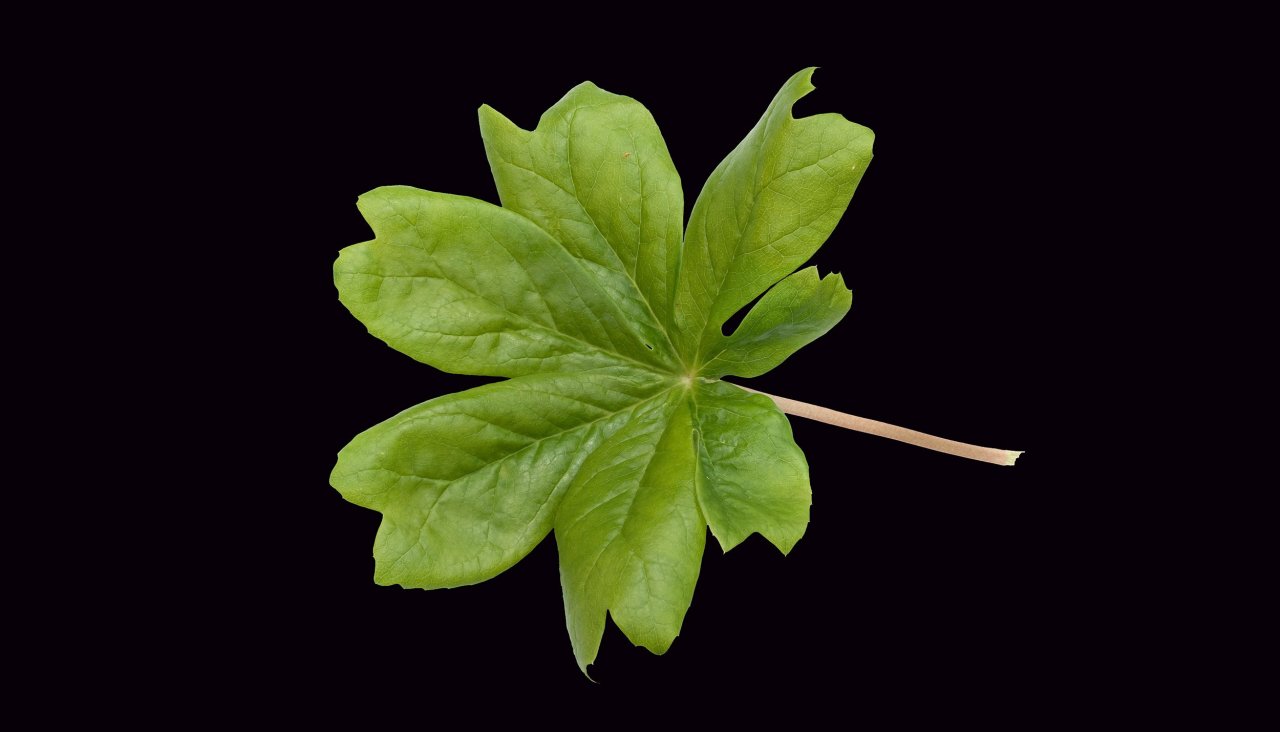
An endangered species with a habitat as high as 2.5 miles above sea level, the Himalayan mayapple is not an easy plant to get hold of. Yet humans keep trying, because the poisonous plant naturally produces podophyllotoxin , a preliminary compound in etoposide—classed as an essential medicine by the World Health Organization (WHO)—which is used to treat a range of cancers. Now, researchers have identified the plant's genetic components, which make the key ingredient, and transplanted them into a cheap medium—meaning that the drug could theoretically be produced at low cost and high scale.
After mapping out the genome for the mayapple, researchers from Stanford University identified which proteins in the plant were responsible for producing podophyllotoxin. They noted that it was only when the leaf was damaged that podophyllotoxin was made, as a chemical defense against attack. So, they punctured the leaves and watched as 31 new proteins appeared. Then the team used a novel combination of techniques to identify which enzymes were making which proteins when the leaf was wounded. Eventually, after trying a number of different enzyme combinations, they produced the right 10-protein combo which produced podophyllotoxin.
Then they successfully transferred these proteins into a common, cheap alternative plant. Ironically, they chose Nicotiana benthamiana —a close relative of the tobacco plant, which is the biggest avoidable cause of cancer in the world. Elizabeth Sattely, assistant professor of chemical engineering at Stanford and the lead author on a new study published in Science, says the tobacco relative was used because it has been widely studied by plant biologists and is easy to engineer.
The goal is to grow the cancer drug in an even less costly, more scalable bioform: yeast. This would not be the first time scientists have taken a pharmaceutical out of a plant and implanted it into yeast. Yeast is already used to produce artemisinin, the WHO's recommended drug for treating malaria , and hydrocodone—a painkiller closely-related to morphine—at one-tenth of the cost of traditional morphine production routes.
Before any drug can be grown in a bioform, however, you need to identify the enzymes required for making it. Sattely says the enzyme-identifying technique pioneered in the study could be used to keep up supply of plenty of other essential drugs. For example, paclitaxel (sold under the brand name Taxol), which is used to treat ovarian, breast and non–small cell lung cancers, is derived from the bark and needles of certain types of yew tree. Approximately 20 pounds of dried bark are required to produce 2 pounds of taxol—and each tree yields just 2 pounds of bark. Meanwhile, chemical synthetic methods have been unable to produce the drug on the global scale required. This new technique could provide a means to do so.
"Many cancer drugs that are derived from plants have been very difficult to obtain in large supply," says Sattely. "The ability to engineer easy-to-grow hosts to make these molecules could change that."
About the writer
Conor is a staff writer for Newsweek covering Africa, with a focus on Nigeria, security and conflict.














